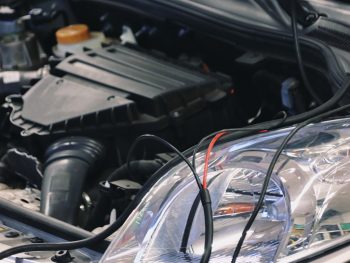Tighter Euro 7 emissions proposals slammed on all sides
The European Commission has published its long-awaited proposals for Euro 7 vehicle emissions standards, attracting instant ire from both eco campaign groups and vehicle manufacturers.

The proposed regulations would take effect from July 2025 for cars and vans and July 2027 for heavy-duty vehicles
The proposed regulations would take effect from July 2025 for cars and vans and July 2027 for heavy-duty vehicles, governing the last generation of engines ahead of the EU’s ban on internal combustion engines from 2035 – it’s expected that cars and vans with internal combustion engines put on the market before that date will stay on European roads at least for another decade or more.
The package of measures follows four years of work by the European Commission to clean up toxic pollution from road transport – which causes 70,000 premature deaths in the EU each year. The new proposals will also help support the stricter air quality standards proposed by the Commission in October 2022.
The new Euro 7 standards replace the previously separate emission rules for cars and vans (Euro 6) and lorries and buses (Euro VI), providing a single set of rules for all motor vehicles, while being fuel- and technology-neutral.
The rules set lower or new emission limits for all vehicles, including for pollutants previously not regulated, and factor in tests where the vehicles are driven on the road in more representative driving conditions and improved durability requirements. In addition, the Euro 7 standard rules will reduce emissions from brakes and tyres.
The European Commission said Euro 7 will lower total NOx emissions from cars and vans by 35% compared to Euro 6, and by 56% compared to Euro VI from buses and lorries. At the same time, particles from the tailpipe will be lowered by 13% from cars and vans, and 39% from buses and lorries, while particles from the brakes of a car will be lowered by 27%.
For cars and vans, the proposals retain the strictest thresholds of the existing Euro 6 limits as a starting point, applied across all technologies. For example, NOx used to have a limit of 60mg/km for petrol cars, and 80mg/km for diesel. Under the Euro 7 standard rules, that limit will be 60mg/km, regardless of the technology.
For lorries and buses, emission limits are set lower than they were in the previous Euro VI heavy-duty standards.
However, the proposals, which are now being submitted to the European Parliament and the Council, have been slammed by both eco and industry stakeholders.
Campaign group Transport & Environment has accused the EU Commission of prioritising automaker profits in an “historic failure to reduce toxic pollution from cars and trucks”.
It says there are major failings, including:
- The retention of the existing Euro 6 petrol limits for cars, “completely failing to take into account technological progress since the Euro 6 limits were set over a decade ago”.
- A last-minute increase by Commission to the particle number limit for trucks by 100% – 100% higher than advised by its own experts.
- A brake particle limit (7mg/km) that T&E says fails to ensure that the most effective technology to reduce pollution (vacuum aspiration) will be introduced until 2035 (when limits are finally tightened) despite it being available and affordable.
It also criticises the on-road driving conditions under which limits will be checked, says that driving conditions under which limits apply are more stringent for trucks than cars, and calls out the length of time for which the limits have to be met.
The campaign group has said it’s now critical that the European Parliament strengthens these “shockingly weak standards” or simply rejects them, and is refuting carmaker arguments that stricter standards would force them to invest in new engine and exhaust technology, diverting resources from electric vehicles.
“The industry lobby has fiercely opposed Euro 7, using dirty tricks to influence decision makers. Now the Commission has caved into their demands. Carmakers’ profits are being prioritised over the health of millions of Europeans,” said Anna Krajinska, vehicle emissions and air quality manager at T&E.
But the European Automobile Manufacturers’ Association (ACEA) has also hit back at the proposals, saying they risk slowing down the transition to zero-emission transport.
Oliver Zipse, ACEA president and CEO of BMW, outlined: “The auto industry takes its role to reduce both CO2 and pollutant emissions very seriously. Indeed, last year we made a very constructive proposal for a new Euro 7 which would bring a major reduction in criteria pollutants, thus improving air quality. Unfortunately, the environmental benefit of the Commission’s proposal is very limited, whereas it heavily increases the cost of vehicles. It focuses on extreme driving conditions that have hardly any real-life relevance.”
And it says the Euro VII proposal is particularly harsh for trucks and that the proposed implementation dates are unrealistic, given that the Euro 7/VII legislative package isn’t likely to be ready before the middle to end of 2024.
Ford has also spoken out already on the proposals, saying the plans have “the potential to undermine the great progress Europe has made in shifting to electric mobility”.
Martin Sander, general manager Model e, added: “We should not be diverting resources to yesterday’s technology and invest in zero-emission instead. Our goal at Ford is clear: zero-emission by 2030 for all passenger vehicles and for all Ford vehicles by 2035.”

